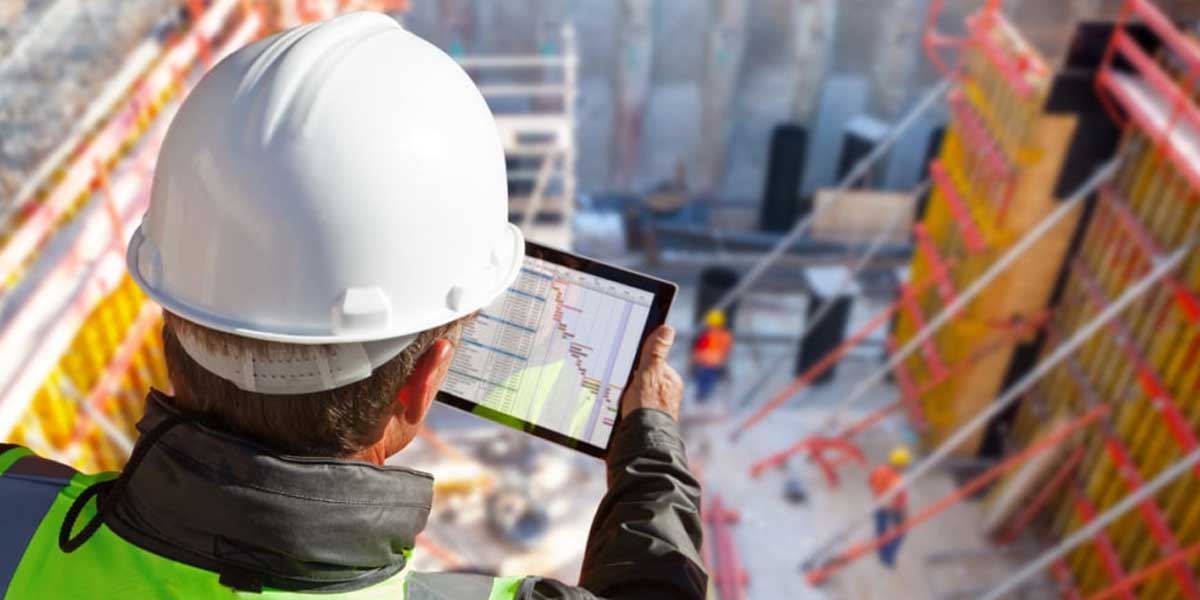Cybersecurity is the practice of protecting systems, networks, and data from unauthorized access, use, disclosure, disruption, modification, or destruction. In the construction industry, cybersecurity refers to the protection of sensitive information, such as employee data, intellectual property, and financial data, from cyber threats.
The construction industry is a prime target for cyberattacks because it collects and stores a large amount of sensitive data. This data includes project plans, blueprints, financial information, and employee data. Cybercriminals can use this data to steal intellectual property, disrupt construction projects, or extort money from businesses.
Lack of cybersecurity in the construction industry can give easy access to terrorist or ill-minded people in a number of ways. For example, if a construction company's computer systems are not properly secured, hackers could gain access to sensitive information about construction projects, such as blueprints, schematics, and schedules. This information could then be used by terrorists or other criminals to plan and execute attacks on critical infrastructure.
For example, if the infrastructure design of a border crossing comes into the hands of ill-minded people, they could use this information to identify vulnerabilities in the security system and plan an attack. They could also use this information to disrupt traffic or cause other chaos at the border crossing.
In 2021, the construction industry was hit by a record number of cyberattacks, with a 50% increase from the previous year.
There are a number of reasons why the construction industry is a target for cyberattacks. First, the construction industry is increasingly reliant on digital technology. This includes the use of computer-aided design (CAD) software, building information modelling (BIM), and cloud-based collaboration tools. These technologies make it easier for criminals to gain access to sensitive data.
Second, the construction industry is often seen as an easy target. Many construction companies do not have a strong cybersecurity posture. They may not have a formal cybersecurity plan in place, and their employees may not be properly trained on how to identify and report cyberattacks.
Third, the construction industry is a global industry. This means that construction companies are often working with partners and subcontractors from all over the world. This can make it difficult to track and manage cybersecurity risks.
The consequences of a cyberattack in the construction industry can be severe. They can lead to financial losses, disruption of projects, and even safety hazards.
Here are some of the most common cyberattacks in the construction industry:
-
Data breaches: These occur when unauthorised individuals gain access to sensitive data. This data could include blueprints, financial information, or employee records.
-
Malware attacks: These involve the use of malicious software to damage or disable systems. This could lead to the loss of data, the disruption of operations, or even the destruction of critical infrastructure.
-
Phishing attacks: These involve sending emails or text messages that appear to be from a legitimate source in order to trick the recipient into providing personal information. This information could then be used to gain access to systems or to commit identity theft.
Here are some steps that construction companies can take to improve their cybersecurity:
-
Implement a formal cybersecurity plan. This plan should include policies and procedures for protecting sensitive data, as well as training for employees on how to identify and report cyberattacks.
-
Use strong passwords and multi-factor authentication. This will make it more difficult for attackers to gain access to systems.
-
Keep software up to date. Software updates often include security patches that can help to protect systems from known vulnerabilities.
-
Be aware of phishing attacks. Phishing emails and text messages often contain links or attachments that can infect systems with malware.
-
Have a disaster recovery plan in place. This plan will help to minimize the impact of a cyberattack if one does occur.
-
Educate employees about cybersecurity risks. Employees are often the weakest link in a company's cybersecurity defense. By educating employees about cybersecurity risks, companies can help to reduce the likelihood of a cyberattack.
-
Use a firewall and antivirus software. A firewall can help to block unauthorized access to systems, and antivirus software can help to detect and remove malware.
-
Segment your network. Segmenting your network can help isolate critical systems from the rest of the network. This can make it more difficult for attackers to spread malware or gain access to sensitive data.
-
Monitor your systems for suspicious activity. There are a number of tools that can help you monitor your systems for suspicious activity. By monitoring your systems, you can identify and respond to potential cyberattacks more quickly.
-
Have a plan for responding to a cyberattack. If a cyberattack does occur, it is important to have a plan for responding. This plan should include steps for containing the attack, restoring systems, and notifying affected parties.
By following these steps, construction companies can help improve their cybersecurity and protect their sensitive data and systems from cyberattacks.
Cybersecurity training for employees can cover a wide range of topics, but some of the most common include:
- Phishing: Phishing is a type of social engineering attack that uses email or text messages to trick users into providing personal information. Employees should be trained to identify phishing emails and text messages, and to never click on links or open attachments from unknown senders.
-
Malware: Malware is malicious software that can be used to damage or disable computer systems. Employees should be trained to identify malware, and to never download or run files from unknown sources.
-
Password security: Passwords are the first line of defense against unauthorized access to computer systems. Employees should be trained to create strong passwords, and to never share their passwords with anyone.
-
Social engineering: Social engineering is a type of attack that uses human psychology to trick users into providing personal information or clicking on malicious links. Employees should be trained to be aware of social engineering attacks, and to never give out personal information or click on links from unknown senders.
-
Physical security: Physical security is also important for cybersecurity. Employees should be trained to keep their computers and devices secure, and to report any suspicious activity.
In addition to these topics, cybersecurity training can also cover other topics, such as:
- Data privacy: Employees should be trained on how to protect sensitive data, and never share it with unauthorized individuals.
-
Cybersecurity policies and procedures: Employees should be trained on the company's cybersecurity policies and procedures, and how to follow them.
-
Incident response: Employees should be trained on how to respond to a cybersecurity incident, and how to report it to the appropriate authorities
- Cybersecurity training can be delivered in a variety of ways, including:
- In-person training: This is the most traditional form of cybersecurity training, and it is often delivered by a qualified instructor.
-
Online training: Online training is a convenient and cost-effective way to deliver cybersecurity training. There are many online training courses available, and they can be tailored to the specific needs of the organization.
-
Blended learning: Blended learning combines in-person training with online training. This can be a good way to get the best of both worlds.
The best type of cybersecurity training for employees will vary depending on the specific needs of the organization. However, all organizations should provide some form of cybersecurity training to their employees. This will help to protect the organization's sensitive data and systems from cyberattacks.
A cybersecurity incident response plan (CIRP) is a document that outlines the steps that an organization will take in the event of a cyberattack. It should include information on how to identify, contain, and mitigate the impact of an attack.
Here are some steps that construction companies can take to establish a CIRP:
-
Identify assets. The first step is to identify the organization's critical assets, such as sensitive data, financial information, and IT systems.
-
Assess risks. Once the assets have been identified, the organization should assess the risks to those assets. This includes identifying the threats that the organization faces, as well as the vulnerabilities that could be exploited by attackers.
-
Develop procedures. The next step is to develop procedures for responding to different types of cyberattacks. These procedures should be specific and well-documented.
-
Assign roles and responsibilities. The organization should assign roles and responsibilities for responding to cyberattacks. This will ensure that everyone knows what they are supposed to do in the event of an attack.
-
Test the plan. The CIRP should be tested regularly to ensure that it is effective. This can be done by conducting simulated cyberattacks.
-
Communicate the plan. The CIRP should be communicated to all employees so that they know what to do in the event of an attack.
By following these steps, construction companies can establish a CIRP that will help them respond effectively to cyberattacks.
Construction companies collect and store a lot of sensitive data, such as blueprints, financial information, and employee records. This data is a valuable target for cyberattackers, who could use it to steal intellectual property, disrupt operations, or even commit identity theft.
Here are some of the software security tools available today in the construction industry:
-
Firewalls: Firewalls are the first line of defense against cyberattacks. They block unauthorized access to computer networks and systems.
-
Antivirus software: Antivirus software scans computer systems for malware, such as viruses, trojans, and worms. It can also remove malware that has already been infected.
-
Intrusion detection systems (IDS): IDSs monitor computer networks for suspicious activity. They can alert administrators to potential cyberattacks.
-
Intrusion prevention systems (IPS): IPSs are similar to IDSs, but they can also take action to block suspicious activity.
-
Data loss prevention (DLP): DLP software helps to prevent sensitive data from being lost or stolen. It can do this by monitoring data flows and blocking unauthorized access to sensitive data.
-
Application security testing (AST): AST tools help to identify security vulnerabilities in applications. They can be used to test applications for both known and unknown vulnerabilities.
It is essential for construction companies to have a strong cybersecurity posture. This includes implementing a formal cybersecurity plan, using strong passwords and multi-factor authentication, keeping software up to date, being aware of phishing attacks, and having a disaster recovery plan in place.




















